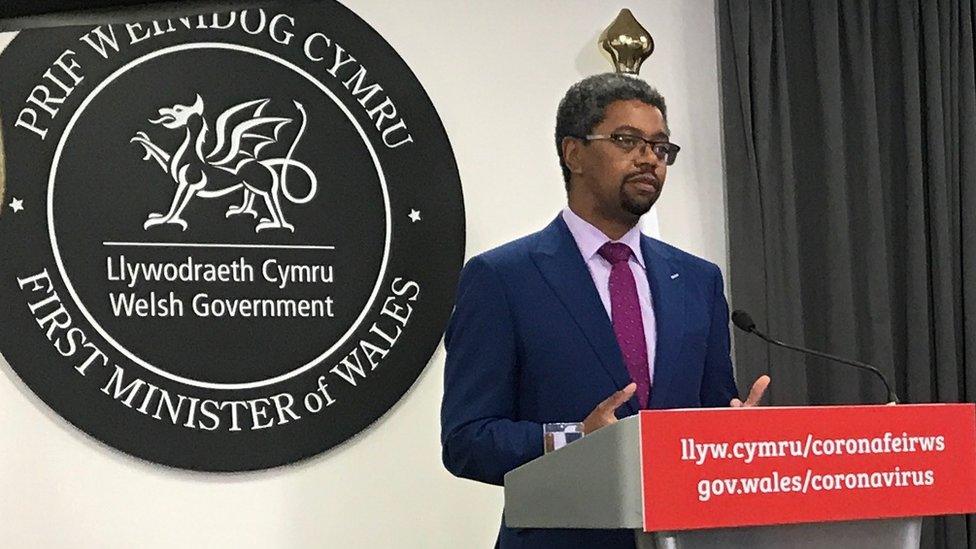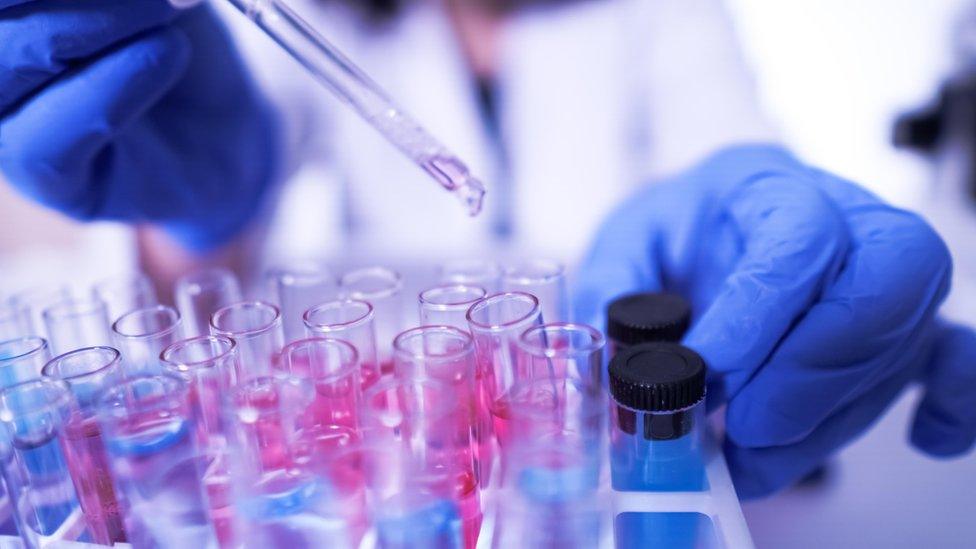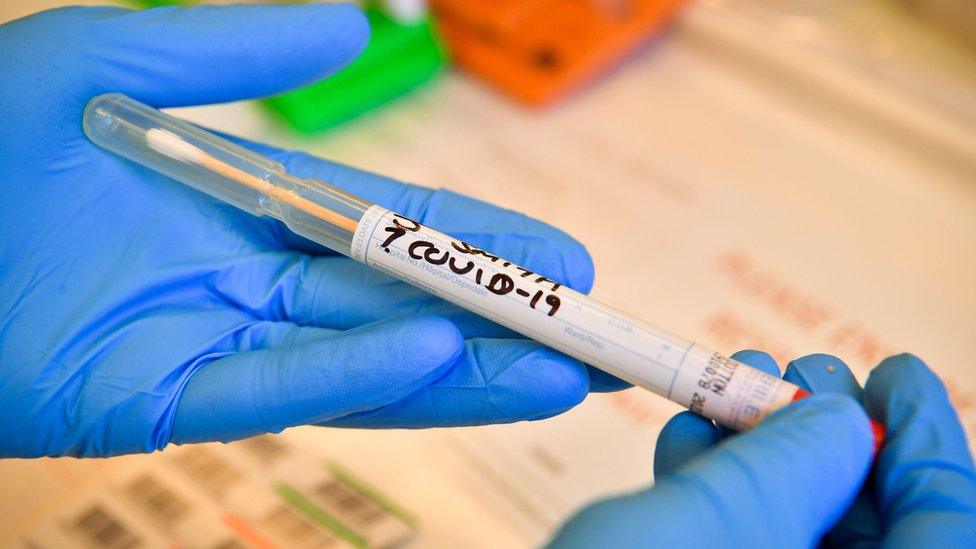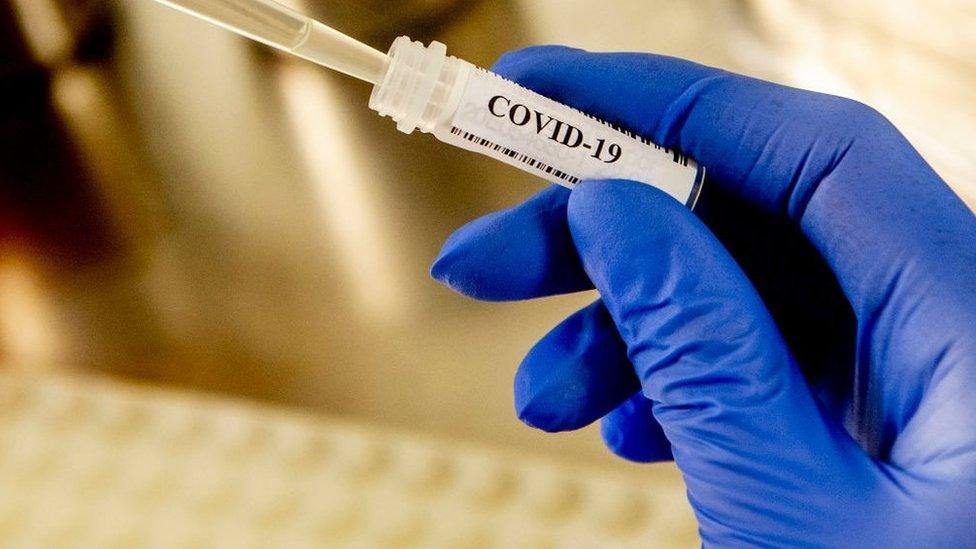Coronavirus: 1,000 staff needed for contact tracing in Wales
- Published

Vaughan Gething said on Tuesday tests had reached 5,330 a day
A work-force of 1,000 will be needed as part of a new strategy to test the public and trace the spread of coronavirus in Wales, the Welsh Government has said.
Ministers are hoping to use a test, track and trace strategy to ease the country out of lockdown.
The Welsh Government pledged to increase testing capacity to 20,000-a-day as it implements the plans.
Daily capacity now stands at 5,330 a day.
An initial draft had suggested that as many 36,000 test a day could have been needed - Health Minister Vaughan Gething had dismissed that figure.
The Welsh Conservatives welcomed the plan but said it was an initial outline, while Plaid Cymru complained of a lack of detail.
Meanwhile the chief executive of Public Health Wales has apologised for saying she was not aware of a former target to test 9,000 people a day by the end of April.

Test, tracking and tracing are widely seen as key to keeping outbreaks under control
Under the "Trace, Track and Protect" strategy the Welsh Government intends to:
identify those with symptoms consistent with Covid-19, enabling them to be tested while isolating
trace individuals who have been in close contact with the person
provide advice and guidance, particularly where the individual or their contacts are vulnerable or at greater risk
ensure that if an individual tests negative and symptoms are not due to coronavirus, individuals and contacts get back to normal routines.
The plan says the Welsh Government will continue to increase its testing capacity over the coming weeks and months, "potentially to as many as 10,000 tests a day, enabling us to test more people staying in hospitals and care settings and those working in these sectors and in other critical services".
Mr Gething told the Senedd's virtual meeting on Wednesday that he hopes to have 10,000 tests a day by the end of May.
It says it can increase testing further by "drawing on the testing programme across the UK".
"Contact tracing combined with the other purposes that testing supports could require as many as 20,000 tests a day," the plan says, adding this was dependant on the spread of the disease.
It is understood the 20,000 figure includes a home testing system for the general public which will be delivered on a UK-wide basis. It is not clear when the Welsh Government intends to reach the figure.

The report says that, working with councils and NHS health boards, the Welsh Government is "aiming to deploy a workforce of around 1,000 staff".
"We will then grow our workforce and adapt our approach as circumstances dictate".
Contact tracing would be maintained at a "significant level, potentially for the next year or until a vaccine is found", the plan said, "responding to the latest evidence on how common the disease is across Wales and how quickly it is spreading".
The Welsh Government is also hoping to make use of the NHSX app being trailed in the Isle of Wight, which will alert users if they may have come into proximity with someone with coronavirus, but is seeking privacy assurances.
Welsh Conservative health spokeswoman Angela Burns said the plan was "better late than never". But she added: "The devil will be in the detail, and at the moment this announcement is more of an outline, rather than a definitive plan."
Plaid Cymru health spokesman Rhun ap Iorwerth said a strategy "is only as good as its implementation plan and there's no detailed plan here that I can see to put the already widely accepted principles of the need to test and trace into practice".
Apology for testing comment
Separately, Public Health Wales chief executive Tracey Cooper apologised "sincerely" to members of the Welsh Parliament's health committee for the "confusion" caused after she said she was "not familiar" with the abandoned 9,000-a-day testing target.
"The 9,000 relates to the 5,000 domestic testing capacity that was our primary focus for the end of April and the additional 4,000 was a figure based on assumptions at the UK level and was not associated with our 5,000 capacity planned for the end of April," she wrote.
"The Welsh Government has indicated that the additional 4,000 tests (on top of the 5,000 tests in Wales) was not a target for testing in Wales, but reflected the UK level assumptions at the time.
"I now realise that this differentiation was at the core of the confusion my answer caused and I apologise again to the committee."
- Published9 May 2020

- Published6 May 2020

- Published7 May 2020

- Published4 May 2020
